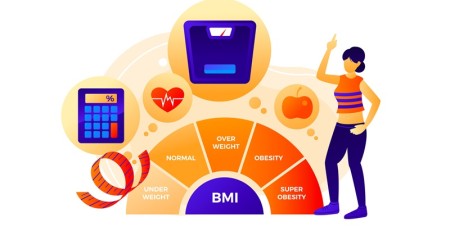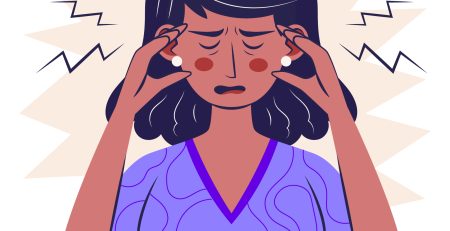Shingrix Side Effects Reviewed
Key takeaways:
- The shingles vaccine (Shingrix) can help prevent shingles and the long-lasting pain that it can cause.
- Shingrix is generally well tolerated. Still, you may have arm pain, headache, or fever for a couple of days after the vaccine.
- Take it easy and avoid heavy physical activity after your shot. If needed, an over-the-counter pain reliever, like acetaminophen (Tylenol) or ibuprofen (Advil, Motrin), may help with bothersome side effects.
Did you know that the same virus that causes chickenpox in children can sometimes reactivate in adults? This is known as shingles, and it happens to 1 out of every 3 people in their lifetime.
Shingles can give you a painful rash on one side of your body that can last for up to 4 weeks. Shooting pain that feels like electricity, called postherpetic neuralgia (PHN), may last for weeks, months, or even years after getting shingles. In severe cases, shingles can lead to blindness, loss of hearing, or even death.
The good news is that there’s a vaccine available to prevent shingles and its complications. But you may be wondering if the vaccine’s side effects are worth the benefit. For most, temporary discomfort from the shots beats dealing with shingles and PHN.
Let’s see if the shingles vaccine is right for you. Here, we’ll focus on the common and serious side effects, how to manage them, and when you should talk to your healthcare provider.
What is the shingles vaccine?
Shingrix is an FDA-approved vaccine that helps prevent herpes zoster (shingles) in adults. By preventing shingles, the vaccine also helps prevent PHN, a common complication of the condition. Depending on your age, the vaccine is 91% to 97% effective at preventing shingles and around 90% effective at preventing the long-lasting pain of PHN.
Shingrix is the only shingles vaccine available in the U.S. It’s given as a shot into the muscle of your upper arm. A second dose needs to be given 2 to 6 months later.
Who should get it?
The CDC recommends that adults ages 50 and up get the shingles vaccine. As mentioned above, it’s part of a two-dose series. And if you’re an older adult that hasn’t gotten the shingles vaccine yet, it’s never too late. There isn’t a maximum age limit to get it.
You can also get the vaccine if you’re at least 19 years old and have a weakened immune system. In this case, you can receive a second dose 1 to 2 months after the first. Talk to your healthcare provider if you think this may apply to you.
Even if you’ve already had shingles or received a different shingles vaccine, you should still get Shingrix if eligible. But you shouldn’t get it if you’re allergic to any of the vaccine ingredients, currently have shingles, or are pregnant.
What if I’m not sure if I’ve had chickenpox?
While nearly all adults ages 50 and up have had chickenpox, it doesn’t affect the decision to get Shingrix. You can still get the vaccine, even if you don’t know if you’ve had chickenpox before.
If you have a weakened immune system and haven’t had chickenpox, the chickenpox vaccine, or shingles, talk to your healthcare provider. They’ll advise you about getting Shingrix.
What are the common side effects of the shingles shot?
There are a few common side effects of Shingrix. They tend to happen more frequently in younger people. Most commonly, people experience mild to moderate upper arm pain where the shot was given. This can also include redness and swelling at the injection site.
Other common side effects include:
- Headache
- Stomach pain
- Nausea
- Fatigue
- Fever
- Shivering
How long do the side effects last?
While the shingles shot side effects can be bothersome, they typically only last 2 to 3 days. Remember: feeling under the weather for a few days still beats dealing with shingles and its complications. If you get shingles, you could have a rash for several weeks and pain that can last for years.
Are the side effects of the second Shingrix shot as bad as the first?
There’s no relationship between how your body responds to the first and second dose of Shingrix. For example, some people have side effects with both doses, while others don’t experience any side effects at all.
It’s also possible to have side effects after either the first or second dose only. But you can expect to at least have some arm pain after both vaccine doses.
What are the serious side effects?
As with any vaccine, there’s a small risk for a severe allergic reaction. After your shot, it’s important to watch for the following symptoms:
- Skin itching or hives
- Swelling in your face or throat
- Trouble breathing
- Dizziness
- Fast heartbeat or chest pain
- Severe weakness
The provider giving you your vaccine may have you wait 15 minutes afterwards to monitor for an allergic reaction. And though these symptoms may start within a couple minutes, they can also happen hours later. If you experience any of these symptoms after leaving the vaccination site, seek immediate medical attention.
Guillain-Barré syndrome (GBS) is a rare but serious condition that has been reported after the shingles vaccine. GBS is a disorder of the nervous system where the body attacks itself.
It’s not known what exactly causes GBS. And there’s not enough evidence to say for sure that it’s caused by the vaccine.
Cases of GBS have been reported within 42 days of vaccination. Watch for and report any of the following symptoms immediately:
- Feeling pins and needles in your hands or feet
- Difficulty walking
- Shortness of breath
- Fast heartbeat or changes in blood pressure
- Changes in vision
- Severe weakness
- Severe pain
- Loss of your bladder control
- Loss of your bowel function
If you’re unsure if you’re experiencing any unusual effects after the shingles vaccine, contact your healthcare provider. While many of the side effects can be treated at home, don’t overlook these potentially serious conditions.
Tips for managing shingles shot side effects
As mentioned earlier, most side effects go away in a couple days without any treatment.
Plan to take it easy for a couple of days after each vaccine dose. Avoid unnecessary physical activity, including exercise, housework, and yard work. You may be advised to take an over-the-counter pain reliever, like acetaminophen (Tylenol) or ibuprofen (Advil, Motrin), to help with arm pain.
The bottom line
Shingrix is the only vaccine available to prevent shingles and its complications. You may benefit from the shingles vaccine if you’re at least 50 years old, or if you’re over the age of 19 with a weakened immune system.
The shingles shot side effects are usually mild and go away within a few days. This can be a much better alternative compared to the rash and possible long-term pain associated with shingles.
If you’re thinking about the shingles vaccine, talk to your healthcare provider for more information.
Book an appointment to receive your vaccination, covered by OHIP
References
Centers for Disease Control and Prevention. (2019). About shingles (herpes zoster).
Centers for Disease Control and Prevention. (2019). Complications of shingles.
Centers for Disease Control and Prevention. (2019). Shingles (herpes zoster) signs & symptoms.
Centers for Disease Control and Prevention. (2022). About the vaccine.
Centers for Disease Control and Prevention. (2022). Clinical considerations for use of recombinant zoster vaccine (RZV, Shingrix) in immunocompromised adults aged ≥19 years.
Centers for Disease Control and Prevention. (2022). Shingles vaccination.
Centers for Disease Control and Prevention. (2022). Shingrix recommendations.
GlaxoSmithKline Biologicals. (2021). Shingrix [package insert].
Food and Drug Administration. (2021). FDA requires a warning about Guillain-Barré Syndrome (GBS) be included in the prescribing information for Shingrix.
Written by Brian Leonard, PharmD, BCACP, BCGP | Reviewed by Christina Aungst, PharmD











